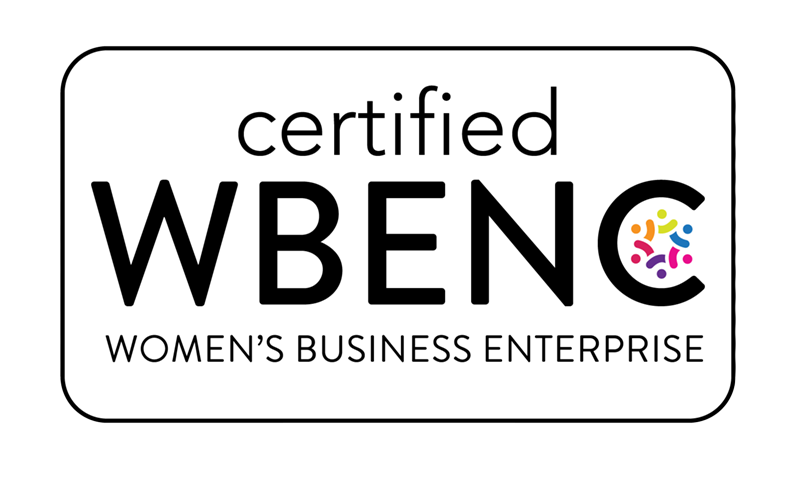The U.S.-Mexico-Canada Agreement (USMCA):
What It Means for North America Trade -
Part 17
Audio Conversation:
Full Blog Article:
In this seventh article, we’re diving deep into the U.S.-Mexico-Canada Agreement (USMCA), its rules of origin, and how small and midsize businesses (SMBs) can qualify for its benefits.
The USMCA is more than just a successor to NAFTA—it’s a modernized agreement designed to reflect the realities of today’s global trade. For SMBs, effectively leveraging the USMCA can mean reduced tariffs, expanded markets, and simplified cross-border processes. But to unlock these advantages, it’s critical to understand the nuances of its rules, especially the rules of origin (ROO).
Let’s explore the most important details for businesses, looking to qualify, under the USMCA.
What is the USMCA?
The USMCA, which replaced NAFTA on July 1, 2020, is a trilateral trade agreement among the United States, Mexico, and Canada. It aims to facilitate tariff-free trade, strengthen intellectual property protections, and modernize trade processes across the region.
For businesses, the USMCA offers tangible benefits, including tariff elimination, enhanced customs efficiency, and better access to North American markets. However, the key to reaping these benefits lies in meeting the ROO, which establishes the criteria for goods to qualify as “originating” in the region.
Key Provisions of the USMCA
1.
Tariff Elimination: The USMCA continues to eliminate tariffs for most goods traded among the three countries. Products that meet the ROO can enter the U.S., Mexico, or Canada duty-free, giving businesses a significant cost advantage.
2.
Streamlined Customs Procedures: The agreement includes updated customs measures, such as electronic filing and expedited clearance for low-value shipments. These improvements minimize delays, helping SMBs operate efficiently.
3.
Modernized Trade Rules: The USMCA addresses emerging trade issues, including e-commerce and intellectual property rights, providing SMBs with a framework for competing in the digital economy.
Understanding the Rules of Origin (ROO): Qualifying Under the USMCA
The rules of origin determine whether a product qualifies for tariff benefits under the USMCA. Unlike NAFTA, the USMCA imposes stricter requirements for certain industries, particularly automotive, and introduces flexibility for others through updated valuation methods.
Key ROO Criteria
To qualify as “originating,” goods must meet one of the following conditions:
1.
Wholly Obtained or Produced: Goods that are entirely produced or obtained within the U.S., Mexico, or Canada, such as agricultural products or natural resources, automatically qualify.
2.
Regional Value Content (RVC): When determining the RVC of a product, businesses can choose between the Transaction Value Method (TVM) and the Net Cost Method (NCM):
Regional Value Content: TVM vs. NCM
- Transaction Value Method (TVM): The percentage is based on the transaction value (price paid) of the good. This method is best for simpler supply chains where the transaction value of the goods accurately reflects the cost of goods or raw materials, within the region.
- Net Cost Method (NCM): The percentage is based on the net cost of production, excluding certain expenses like sales promotion and royalties. The method is preferred for complex supply chains where production costs are more transparent than transaction values.
For example, a business manufacturing electronics with a complex mix of materials may find the NCM more advantageous for proving compliance.
3.
Tariff Shift: Goods that undergo a significant transformation during production may qualify if they change tariff classification (as defined by HS codes). This is particularly relevant for products assembled using foreign materials.
Automotive Industry: Stricter ROO
The automotive sector faces some of the most stringent ROO under the USMCA. Here’s how:
1. Higher RVC Threshold: Vehicles and auto parts must meet a 75% RVC threshold, a significant increase from NAFTA’s 62.5%. This change is designed to encourage greater regional sourcing of components.
2. Labor Value Content (LVC): 40-45% of a vehicle’s content must be made by workers earning at least $16 per hour. This provision aims to raise wages in the region and reduce reliance on low-wage labor.
3. Steel and Aluminum Requirements: 70% of a vehicle’s steel and aluminum must originate from North America.
These tighter requirements mean automotive businesses must carefully map their supply chains to ensure compliance.
Documentation Requirements Under the USMCA
Unlike NAFTA, the USMCA simplifies the process by eliminating the need for a standardized certificate of origin form. However, this does not mean businesses can be lax in their documentation. Instead, specific data elements must be provided to demonstrate compliance with the agreement.
Required Data Elements for USMCA Certification of Origin
1. Certifying Party Information:
- Name, address, phone number, and email of the certifying individual or company.
- The certifying party can be the producer, exporter, or importer.
2. Exporter Information
- Name, address, email, and phone number of the exporter.
- If the exporter is different from the certifying party, this information must still be included.
3. Producer Information
- Name, address, email, and phone number of the producer.
- If the producer does not wish to be identified, the exporter or certifier may state “Available Upon Request.”
4. Importer Information
- Name, address, email, and phone number of the importer.
- If unknown at the time of certification, the phrase “Available Upon Request” is acceptable.
5. Description of the Good
- Detailed description of the goods being certified, including the six-digit Harmonized System (HS) code.
- The description must match the commercial invoice or other shipping documents to avoid confusion or delays at customs.
6. Origin Criteria
- Clear reference to the ROO met by the goods (e.g., wholly obtained, RVC, or tariff shift).
- For example: “RVC using the Net Cost Method at 75%.”
7. Period of Certification
- If the certification applies to multiple shipments of identical goods over a specified period (up to one year), this timeframe must be stated.
8. Certifying Statement
- A declaration such as: “I certify that the goods described in this document qualify as originating under the USMCA.”
9. Certifier’s Signature and Date
- The certifier must sign and date the document, acknowledging responsibility for its accuracy.
Supporting Records and Retention Requirements
In addition to the certification of origin, businesses must maintain supporting records to substantiate the claims made in the certification. These records include:
- Bill of Materials (BOM): A detailed list of components used in the production of goods.
- Invoices from Suppliers: Documentation showing the origin and cost of materials used in production.
- Manufacturing Records: Evidence of where and how goods were produced, including processes and costs.
- Freight and Logistics Documents: Proof of transportation within the region, if applicable.
These documents must be retained for five years from the date of importation, as they may be requested during customs audits.
Common Pitfalls in Documentation
1. Incomplete Data Elements: Failure to include all required information can result in delays or penalties. Double-check that your certification is complete and matches your commercial invoice.
2. Mismatched Descriptions: The description of the goods on the certification must align with other shipping documents, including the HS code. Any discrepancies may raise red flags during customs inspections.
3. Unsupported Origin Claims: If you claim goods meet the RVC or tariff shift requirements, ensure your records back up these claims. Misclassification or insufficient documentation can lead to denied benefits or penalties.
Best Practices for Compliance
- Automate Recordkeeping: Use trade compliance software to organize and store records efficiently. (Refer to our article on “Trade Compliance Software” for more on automation.)
- Conduct Internal Audits: Regularly review your documentation and processes to ensure compliance.
- Work with Experts: A customs broker or trade compliance consultant can help ensure your documentation meets USMCA standards.
How a Customs Broker Can Support Your Business
Navigating the complexities of the USMCA requires expertise. A customs broker can:
- Analyze Eligibility: Determine whether your goods meet the ROO using appropriate valuation methods.
- Optimize Compliance: Identify areas for improvement in your supply chain to meet RVC and tariff shift requirements.
- Handle Documentation: Ensure all certifications and records are complete, accurate, and ready for submission.
By partnering with a knowledgeable customs broker, SMBs can confidently claim USMCA benefits while minimizing compliance risks.
FAQs
Q1: Do I need to use a specific form for the USMCA certification of origin?
A1: No, the USMCA does not require a standardized form. However, your certification must include specific data elements outlined in the agreement.
Q2: What happens if my certification contains errors?
A2: Errors in your certification can result in denied benefits, customs delays, or fines. Review all documentation carefully or work with a customs broker to ensure accuracy.
Q3: How long do I need to retain supporting records?
A3: Records must be retained for five years from the date of importation to comply with customs audit requirements.
Summary
The USMCA provides tremendous opportunities for SMBs to reduce costs, access new markets, and streamline trade processes. By understanding and applying the rules of origin, businesses can confidently navigate the agreement and maximize its benefits.
Key Takeaways:
- The USMCA’s ROO are stricter than NAFTA, particularly for the automotive sector.
- Choosing the right valuation method (TVM or NCM) is crucial for meeting RVC requirements.
- Proper documentation and supply chain mapping are essential for compliance.
What’s Next?
In our next article, we’ll explore the African Growth and Opportunity Act (AGOA), a vital trade agreement that strengthens U.S.-Africa trade relations. Learn how your business can benefit from this unique opportunity. Stay tuned!
References
- U.S. Customs and Border Protection(cbp.gov/trade): Link
- Office of the United States Trade Representative: USMCA Rules of Origin (ustr.gov/trade-agreements): Link
- International Trade Administration: USMCA Resources for Businesses(trade.gov/usmca-resources): Link
If you're curious to see how we can help, please visit our website http://magneticprecision.com/ For inquiries and questions, contact us at inquiries@magneticprecision.com.


